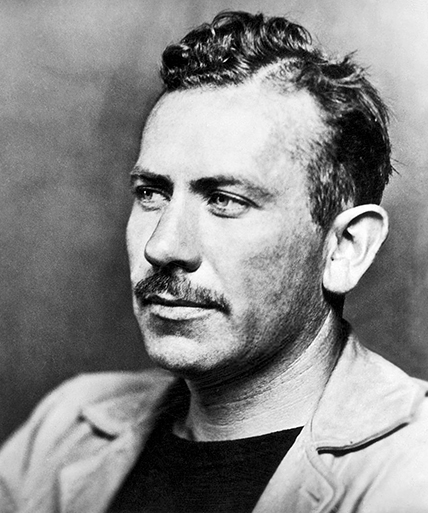Our Amazing History: John Steinbeck

During the late 1950s and 1960s, many great American writers such as Edward Albee, James Jones, Truman Capote, Joe Heller, and Irwin Shaw took up residence in the Hamptons to live and work in quiet settings not too far from the hustle and bustle of Manhattan.
John Steinbeck was among them. He chose Sag Harbor because it reminded him of Salinas and Monterey, fishermen’s towns on the Northern California coast that had been the subject of some of his greatest work — The Grapes of Wrath, Tortilla Flat and Of Mice and Men — about the Depression and its disastrous effect on working-class families.
Steinbeck bought a small house overlooking the peaceful waters of Sag Harbor Cove and on the property built a small, 100-square-foot hexagonal studio where, beginning in 1955, he could go to every morning to write undisturbed.
He’d spend the afternoons in town, out on his boat fishing or enjoying what was then a down-at-the-heels former whaling town, now a working-man’s community where the men carried lunchpails to work every morning, ate when the noon whistle sounded and punched out at 5 p.m. to end the day at the Black Buoy or Sandbar, two local bars in town. Evenings, Steinbeck would be at home with his wife Elaine and his dog Charley.
Steinbeck was 53 years old when he got here. His greatest works seemed behind him. Recent books had not been received well. But a lot happened for him between his arrival here and his passing 13 years later.
In 1961, he wrote The Winter of Our Discontent, a novel about a formerly rich family and its efforts to get ahead in a fictional town resembling Sag Harbor. Then he wrote Travels with Charley: In Search of America.
This book was particularly well received. He’d thought that perhaps in recent years he had lost touch with the ordinary man of this newer generation, and so he got a camper, hopped aboard and went off on a 10,000-mile sojourn to meet the residents of small towns from Maine to California accompanied only by his dog Charley.
He wrote notes about everything he saw and everybody he met. He also wrote loving letters to his wife back home — no mention of this in the book — and after nearly three months returned to write this book in his studio. Published in 1962, it brought him more success and a new generation of readers.
The same year, 1962, he was awarded the Nobel Prize in Literature, the highest honor a writer can receive.
Mostly, during those years he wanted just to enjoy family and friends in a quiet manner, but then, in 1964, he allowed himself to be the centerpiece for the annual Old Whalers Festival, riding in the back of the lead convertible during the parade that kicked off that event. (It is now called HarborFest.)
Since his passing at age 66, Sag Harbor has remained a beautiful small town despite all the celebrity and world-class resort stuff that’s gone on around it.
Interestingly, recently released letters sent to his wife during his Travels with Charley sojourn show him lovingly asking if she could send him this and that and indicating she could send stuff to a particular well-run hotel where he was taking a break from just sleeping in the back of his camper, something he’d never written about doing in the book. He was, after all, at that time, a man in his 60s.
Two years ago, Sag Harbor created a park west of Long Wharf where none had existed before. It’s been named the John Steinbeck Waterfront Park.
This year, his modest waterfront home with the little hexagonal studio was put up for sale by his descendants for about $17 million. It’s on 1.8 acres, has 586 feet of waterfront, a swimming pool and cottage. One hopes that the property is preserved by local authorities for scholars and visitors as is the Pollock-Krasner House in Springs.









